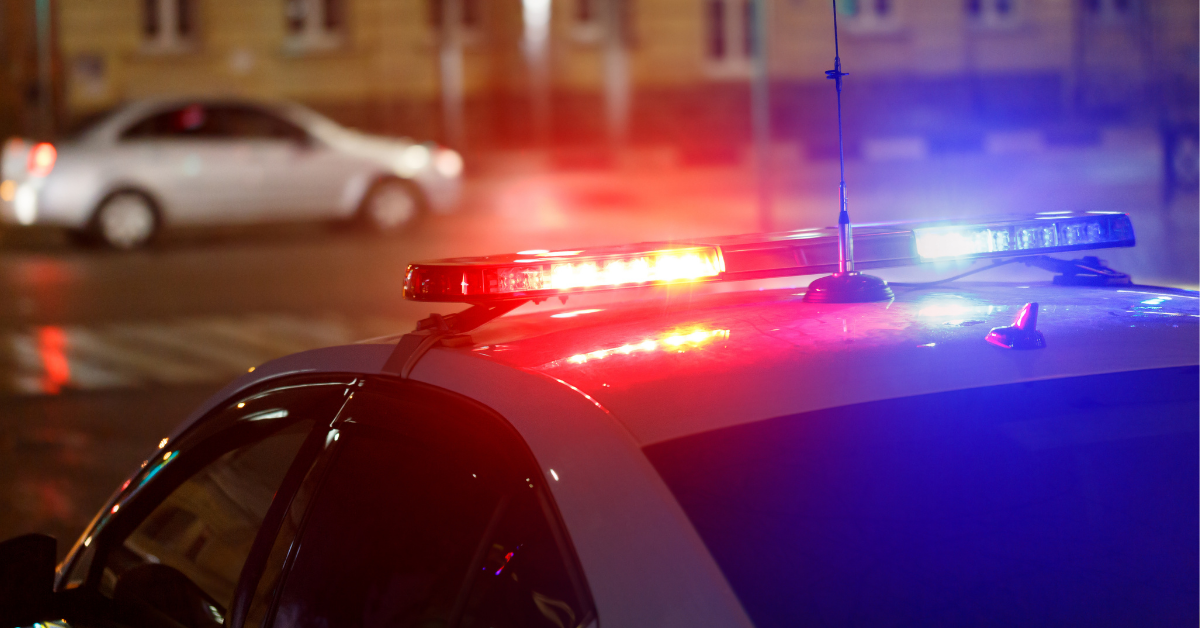You have questions, we have answers! With so many variations and uses, police lights bring with them an abundance of questions and we are here to address some of the most commonly asked ones.
Have we answered your question? Keep reading to find out!
What do (red, blue, white, yellow, amber) lights on a police car mean?
The purpose of colored police lights can vary, but there are some generally consistent uses. Red lights often indicate an immediate emergency. When blue lights are added, it is to alert other drivers to the presence of a police vehicle. White lights are often used at night to enhance visibility in an area.
Yellow lights are sometimes found on some accompanying red and blue LEDs in light bars, surface mounts, dash lights, and more. Yellow lights are most often used to tell drivers to slow down and proceed with caution if there was an accident. Similarly, amber lights can also mean ‘caution.’
Each color produces different wavelengths of visible light. Yellow and amber are most visible since they settle in the middle— and strongest part— of our visible spectrum, where red and blue sit on the far edges of what we can see. This is why yellow and white lights are used alongside blues and reds to make them more visible at night and over longer distances.
What vehicles can use police lights?
The lights most commonly used by police vehicles can also be used by other first responders because light bars, beacons, and surface mounts serve diverse functions in the emergency-service industry.
There are a few exceptions, though. For example, some states have emergency vehicle lighting laws that limit which colors and products tow truck drivers are permitted to use. Similarly, the use of lights by volunteer firefighters are restricted by laws and their own needs— in most cases, it would be impractical for a volunteer to permanently alter their vehicle with something like a light bar, so more temporary options like visor bars and dash lights are used.
Civilian use of police lights could be considered “impersonation of an officer,” so it’s best to leave those lights to first responders and emergency service personnel!
When can civilians use emergency vehicle lights?
The biggest issue remains that you do not want your civilian vehicle to resemble a police vehicle. Luckily, there are emergency lights that civilians can legally use! White lights are a great choice for trucks, cars, ATVs, and weather-specific vehicles like snow mobiles. These lights are legal for off-roading, but are not for on-road use by civilians. Some states limit the number of lights and output on a civilian vehicle, so do your due diligence before purchasing.
In many states, vehicles on private land such as ATVs, farming trucks, or private security vehicles can use emergency lights as long as they are only visible on that property. Again, check your local laws to make sure you are in compliance!
What type of lights do police use?
Police use a combination of different lights based on the type of vehicle and their needs. Here are some of the most commonly used lights:
- Light Bars: a staple of police vehicles, light bars provide illumination for warning signals, emergency dispatches, confirmation of roadway conditions, construction zones, etc.
- Visor Bars: these high-powered warning lights are versatile, affordable, and discreet which is why they are often used in undercover police vehicles.
- Dash Lights: these powerful lights are one of the most discreet options and provide an undercover advantage.
- Surface Mounts: these lights are small but mighty. They come in a variety of sizes and can be mounted almost anywhere on a police vehicle to maximize visibility from all angles.
- Hide-Aways: these compact lights can be installed inside headlights and taillights for the most discreet undercover lighting.
- Traffic Advisors: these lights help guide traffic at the scene of an emergency.
- Rocker Panels: these lights are tucked underneath a vehicle’s sides to increase its broadside visibility. This is essential for preventing accidents as first responders speed through intersections.
How are police lights mounted?
Each light may be mounted differently, even within its own category. Light bars, for example, come with permanent mounts, adjustable foot brackets, headache mounts, and gutter mounts. Visor bars can be installed using a universal or vehicle-specific mounting bracket. Dash lights use industrial-strength suction cups which provide maximum flexibility, since the lights can be removed and reinstalled, whereas mounts and brackets offer a more permanent, long-lasting installation. Both visor bars and dash lights can be hardwired into an external controller, or plugged into a cigarette lighter socket. In addition to the headlight and taillight installation, hide-aways can be mounted to a vehicle’s exterior using a metal flange. Stick lights can be mounted with a sliding bolt.
With installation types ranging from temporary to permanent, there is a perfect option to suit any police vehicle’s needs.
What does it mean when a police car is using lights without a siren?
The use of lights and sirens is situational, though certain states and precincts have their own standards to follow.
Sirens are used most-often in emergency situations where: an officer needs to get to a scene urgently, is in pursuit, or needs to notify others of a hazard. If the lights are on but there is no siren, it could be that there is an ongoing crime and officers do not yet wish to alert the perpetrator of their presence. Another possibility is that, though an officer is headed to an emergency, there is no traffic on the road that needs to move out of the way. Also, if a crime scene is relatively inactive, some officers may choose to leave their lights on without a siren blaring.
Where are the lights on unmarked police cars?
They blend into the background among the daily commuters, but you know they’re around: undercover vehicles! The lights used in and on these vehicles have to be carefully considered so as not to give themselves away. To stay discreet, unmarked vehicles have to avoid externally mounted lights like light bars, but there are several options for these vehicles.
Visor light bars and dash lights are internally mounted and well hidden until switched on. Hide-away strobe lights are discreetly installed inside a vehicle’s headlight or taillights and will not be seen until they need to be. Stick lights are also small enough to be mounted to the vehicle’s grille or inside the vehicle and are difficult to spot when turned off. Finally, surface mounts and grille lights are compact, bright, and versatile, so they may be mounted in a variety of places like the grille, wheel well, rocker panel, window, or over a licence plate.
How many lights can police cars have?
Police vehicles require lights in strategic locations. As mentioned above, covert vehicles require a stealthy, discreet setup. Broadside lighting helps other drivers see police vehicles when they speed through intersections. Likewise, light bars are high-impact with maximum visibility for night patrols.
Certain lights work best for certain types of police vehicles. For example, visor light bars and dash lights are very light-weight, making them perfect for pursuit vehicles. Consider your most common tasks when outfitting your vehicle with LEDs.
How much do police lights cost?
UBL lights start as low as $19.99! If you are looking for the best and brightest bang for your buck, our Visor Bars start at $169.99, Dash Lights start at $59.99, and full-size ilumex Light Bars start at $649.99.
More police lights:
- Surface Mounts: $19.99-$199.99
- Stick Lights: $59.99-$1,399.99
- Hide-Aways: $54.99-$69.99
- Mini Light Bars: $149.99-$449.99
- Perimeter Lights: $19.99-$989.99
UBL also stocks brands like Feniex and Whelen. These lights may be more expensive, but they are long-lasting and ultra-powerful!
How do I wire police lights?
Every light is installed a little differently, but the more complicated the light, the more complicated the installation. Not every light has to be wired in (see question 5 above), but those that do all come with instructions and, in many cases, professional installation is recommended.
While it varies per light, the standard installation process requires you to connect the red (or yellow) wire (+) to 12V+ power, and the black (-) to ground on your vehicle’s battery. Here is an example instruction manual for one of our products. If you choose to proceed with installation without a professional, please be mindful of the warnings and read your instructions carefully.
For more detailed installation instructions, check out the UBL YouTube channel! We also post tutorials, product comparisons, Q&As, and more!
If you have any questions that were not addressed, feel free to reach out to an Ultra Bright Lightz support specialist!
Call us 1-888-562-5125
info@ultrabrightlightz.com


